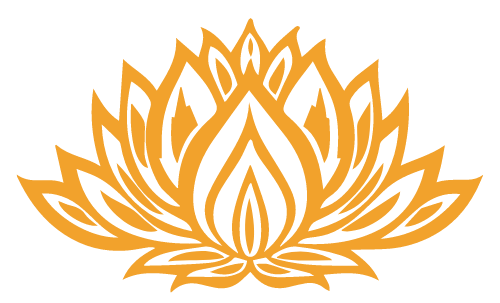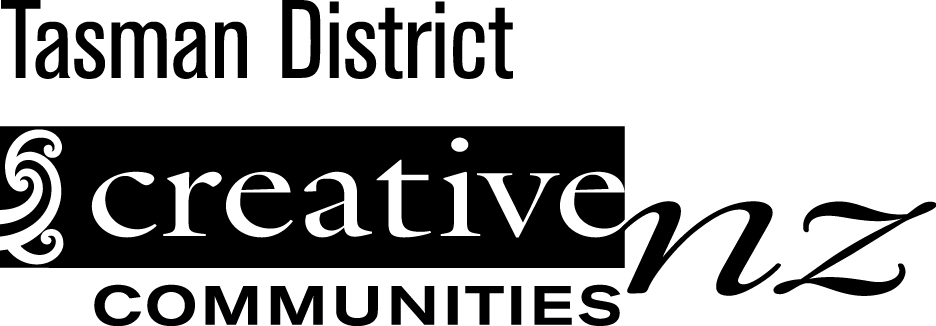DEATHWALKER'S GUIDE TO LIFE
EPISODE 4
Leaving a legacy
Pictured above: Deathwalker's Guide to Life podcast host Kerry Sunderland's ofrenda
OCTOBER 31, 2021
EPISODE 4
Leaving a legacy
Death in Print: No Pressure, No Diamonds: Mining for Gifts in Illness & Loss by Teri A. Dillion, Meet: Legal executive Marie Austin, Death on Screen: 'I Told You I Was Ill: The Life & Legacy of Spike Milligan'
Listen to Episode 4 on the following podcast platforms
Or, if you've already listened to the show, scroll down for more info and links . . .
MUSINGS ON THE THEME
Leaving a legacy
In episode 4 of Deathwalker’s Guide to Life, we explore some of the ways you can leave a legacy after you die.
Perhaps the most obvious legacy is continuing the family line or whakapapa. But some people cannot have children. Others, like me, choose not to have children. Sometimes a child’s death precedes their parents. So not everyone leaves descendants after their death.
Living a creative life is another way to leave a legacy after you die.
The most universal legacy you will leave is of course intangible – these are the memories and feelings people hold for you in their hearts and minds after you die.
In most cultures, these memories begin to be shared during ceremonies and rituals that begin soon after you take you last breath and continue in the days following, especially around your body’s disposal. These collective memory-making events can then continue weeks, months and even years after you die.
One of the most famous cultural ceremonies is Dia de los Muertos or Day of the Dead. This ceremony originated in Mexico but is now practised elsewhere. This year it just happens to be taking place on Tuesday 2 November, just after episode 4 first went to air on Fresh FM.
One of the traditions associated with the original Dia de los Muertos involves building home altars called ofrendas, which are lavished with the favourite foods and beverages of the departed along with flowers, photos, personal belongings and other mementos.
In Aotearoa, the Wellington Día de los Muertos/Day of the Dead celebration takes place on Tuesday 2 November at the Public Trust Hall in Te Aro. It opens at midday and continues until 8pm, with performances beginning at 6pm.
Here in Whakatū, Day of the Dead Nelson has taken place, for many years, at Founder's Heritage Park. For a number of years, the festive family day — featuring Mexican food and drinks, piñatas, face painting, altar building, music and performances, even a chilli sauce competition — took place alongside the Nelson Arts Festival. Unfortunately it won't be going ahead this year due to Covid-19. The organisers are very much hoping celebrations will recommence in 2022. In the meantime, they have created a community ofrenda at Cultural Conversations in Morrison Square (see below for more info).
Over the ditch, the very first Byron Day of the Dead took place in in Heritage Park, on the banks of the Brunswick River in Mullumbimby, in 2007. Organised by the Natural Death Care Centre, it was spearheaded by NDCC founder Zenith Virago, who was my guest on episode 1. The NDCC always envisaged it as a holistic death event; an attempt to bring about cultural change by establishing for our children and ourselves a better, more natural and supportive way to do death and loss — for most people, without the rawness of a recent loss or the intensity of a funeral.
The Byron Day of the Dead continues to be a free community event for anyone and everyone who has lost someone or somebody they love. It combines community art, personal memento making, message writing, and a gentle holistic death Ceremony of Remembrance. It is not aligned to any other cultural or religious ceremonies, and is always on the second Sunday of November. Free from tradition, it is for people to acknowledge their dead loved ones fully, to allow them to be with their living loved ones fully at Christmas.
The 2021 Day of the Dead was originally scheduled to take place on Sunday November 7 at its new home at Crystal Castle. However, there’s been a recent local outbreak of Covid-19 in the Northern Rivers so the event may or may not take place due to COVID restrictions.
The most obvious way to leave a legacy after you die, of course, is by leaving a will. Scroll down for more info about Marie Austin who works at C&F Legal, the show’s sponsor, and specialises in wills and probate.
Perhaps the most obvious legacy is continuing the family line or whakapapa. But some people cannot have children. Others, like me, choose not to have children. Sometimes a child’s death precedes their parents. So not everyone leaves descendants after their death.
Living a creative life is another way to leave a legacy after you die.
The most universal legacy you will leave is of course intangible – these are the memories and feelings people hold for you in their hearts and minds after you die.
In most cultures, these memories begin to be shared during ceremonies and rituals that begin soon after you take you last breath and continue in the days following, especially around your body’s disposal. These collective memory-making events can then continue weeks, months and even years after you die.
One of the most famous cultural ceremonies is Dia de los Muertos or Day of the Dead. This ceremony originated in Mexico but is now practised elsewhere. This year it just happens to be taking place on Tuesday 2 November, just after episode 4 first went to air on Fresh FM.
One of the traditions associated with the original Dia de los Muertos involves building home altars called ofrendas, which are lavished with the favourite foods and beverages of the departed along with flowers, photos, personal belongings and other mementos.
In Aotearoa, the Wellington Día de los Muertos/Day of the Dead celebration takes place on Tuesday 2 November at the Public Trust Hall in Te Aro. It opens at midday and continues until 8pm, with performances beginning at 6pm.
Here in Whakatū, Day of the Dead Nelson has taken place, for many years, at Founder's Heritage Park. For a number of years, the festive family day — featuring Mexican food and drinks, piñatas, face painting, altar building, music and performances, even a chilli sauce competition — took place alongside the Nelson Arts Festival. Unfortunately it won't be going ahead this year due to Covid-19. The organisers are very much hoping celebrations will recommence in 2022. In the meantime, they have created a community ofrenda at Cultural Conversations in Morrison Square (see below for more info).
Over the ditch, the very first Byron Day of the Dead took place in in Heritage Park, on the banks of the Brunswick River in Mullumbimby, in 2007. Organised by the Natural Death Care Centre, it was spearheaded by NDCC founder Zenith Virago, who was my guest on episode 1. The NDCC always envisaged it as a holistic death event; an attempt to bring about cultural change by establishing for our children and ourselves a better, more natural and supportive way to do death and loss — for most people, without the rawness of a recent loss or the intensity of a funeral.
The Byron Day of the Dead continues to be a free community event for anyone and everyone who has lost someone or somebody they love. It combines community art, personal memento making, message writing, and a gentle holistic death Ceremony of Remembrance. It is not aligned to any other cultural or religious ceremonies, and is always on the second Sunday of November. Free from tradition, it is for people to acknowledge their dead loved ones fully, to allow them to be with their living loved ones fully at Christmas.
The 2021 Day of the Dead was originally scheduled to take place on Sunday November 7 at its new home at Crystal Castle. However, there’s been a recent local outbreak of Covid-19 in the Northern Rivers so the event may or may not take place due to COVID restrictions.
The most obvious way to leave a legacy after you die, of course, is by leaving a will. Scroll down for more info about Marie Austin who works at C&F Legal, the show’s sponsor, and specialises in wills and probate.

If you live in Nelson Whakatū, don’t miss the opportunity to visit the Nelson Day of the Dead ofrenda at Cultural Conversations in Morrison Square and learn more about the traditions that make this celebration unique. It's open from Tuesday November 2 to Friday November 5 from 5-7pm.
DEATH IN PRINT
No Pressure, No Diamonds by Teri A. Dillion




Teri A. Dillion self-published No Pressure, No Diamonds: Mining for Gifts in Illness and Loss in November 2020. It’s extraordinary that she even wrote the book, let alone self-published it.
You see, Teri started writing the book after she was diagnosed with Lou Gehrig’s disease — amyotrophic lateral sclerosis (ALS) or motor neurone disease as we know here in Aotearoa. She wrote No Pressure No Diamonds using technology that tracks her eye movements, composing each sentence letter by letter.
Teri was only 35 and newly married when she was told to get her affairs in order before facing total paralysis and death. Living in Colorado, she had a successful career as a psychotherapist and a dedicated Buddhist meditation practice.
But Teri slowly discovers the flaws in the popular narrative: that anything can be healed with the right attitude (or guru, guide, diet, treatment).
In the months that follow her diagnosis, she sets out on what she describes as the 'dizzying pursuit of an unlikely cure, traveling deeper into the byzantine landscapes of alternative medicine and self-help in hopes of being a rare and miraculous survivor'.
As she starts losing control of her muscles, it’s quite astonishing that she manages to travel internationally twice, spending about a month in Peru doing Ayahuasca ceremonies and then a week in Mexico to attend a 900-person ‘retreat’ with Joe Dispenza. By then, in the Northern Hemisphere winter of 2018, she can barely feed herself, stand, hold a water bottle or speak in anything but the most garbled and soft voice. She cannot go to the toilet without assistance.
As she grows increasingly disillusioned with toxic positivity and bypassing spiritual gurus, Teri is forced to dig deeper and deeper into what it means to ‘heal’ herself.
She pursues a raft of treatments not recognised by the orthodox (or mainstream) medical system and also remains dedicated to her spiritual practice.
The very best memoirs are, in my opinion, those with the right balance of vivid moments and authorial insight – that is, the perspective and analysis of the author today reflecting on why they behaved the way they did in the past – and Teri succeeds at this. Her moments of self-reflection became the diamonds for me while reading this – extraordinary self-insights that feel universally applicable.
Teri says she wrote this book to shine a light on how to find resilience while living with terminal illness and she has achieved this. The key question of the book is where do we find healing when no cure or easy answer exists? This is a book for everyone, because you don’t necessarily have to be physically unwell to find healing.
I recommend No Pressure No Diamonds to anyone and everyone who wants to learn how to make the most of, as Pulitzer Prize winning poet Mary Oliver says, their ‘one precious life’.
UPDATE: Teresa Anne Dillion, known as Teri, died at home at 40 years old in Boulder, Colorado, surrounded by her 'healing tribe' on October 15, 2021 after living with ALS (amyotrophic lateral sclerosis, a progressive neurodegenerative disease) for more than five years.
You see, Teri started writing the book after she was diagnosed with Lou Gehrig’s disease — amyotrophic lateral sclerosis (ALS) or motor neurone disease as we know here in Aotearoa. She wrote No Pressure No Diamonds using technology that tracks her eye movements, composing each sentence letter by letter.
Teri was only 35 and newly married when she was told to get her affairs in order before facing total paralysis and death. Living in Colorado, she had a successful career as a psychotherapist and a dedicated Buddhist meditation practice.
But Teri slowly discovers the flaws in the popular narrative: that anything can be healed with the right attitude (or guru, guide, diet, treatment).
In the months that follow her diagnosis, she sets out on what she describes as the 'dizzying pursuit of an unlikely cure, traveling deeper into the byzantine landscapes of alternative medicine and self-help in hopes of being a rare and miraculous survivor'.
As she starts losing control of her muscles, it’s quite astonishing that she manages to travel internationally twice, spending about a month in Peru doing Ayahuasca ceremonies and then a week in Mexico to attend a 900-person ‘retreat’ with Joe Dispenza. By then, in the Northern Hemisphere winter of 2018, she can barely feed herself, stand, hold a water bottle or speak in anything but the most garbled and soft voice. She cannot go to the toilet without assistance.
As she grows increasingly disillusioned with toxic positivity and bypassing spiritual gurus, Teri is forced to dig deeper and deeper into what it means to ‘heal’ herself.
She pursues a raft of treatments not recognised by the orthodox (or mainstream) medical system and also remains dedicated to her spiritual practice.
The very best memoirs are, in my opinion, those with the right balance of vivid moments and authorial insight – that is, the perspective and analysis of the author today reflecting on why they behaved the way they did in the past – and Teri succeeds at this. Her moments of self-reflection became the diamonds for me while reading this – extraordinary self-insights that feel universally applicable.
Teri says she wrote this book to shine a light on how to find resilience while living with terminal illness and she has achieved this. The key question of the book is where do we find healing when no cure or easy answer exists? This is a book for everyone, because you don’t necessarily have to be physically unwell to find healing.
I recommend No Pressure No Diamonds to anyone and everyone who wants to learn how to make the most of, as Pulitzer Prize winning poet Mary Oliver says, their ‘one precious life’.
UPDATE: Teresa Anne Dillion, known as Teri, died at home at 40 years old in Boulder, Colorado, surrounded by her 'healing tribe' on October 15, 2021 after living with ALS (amyotrophic lateral sclerosis, a progressive neurodegenerative disease) for more than five years.
FOR MORE INFORMATION ABOUT TERI A. DILLION
Find out more about and buy No Pressure, No Diamonds.
Teri A. Dillion's official Facebook page.
Find out more about and buy No Pressure, No Diamonds.
Teri A. Dillion's official Facebook page.
KŌRERO / CONVERSATION
Meet Marie Austin

Marie is a registered legal executive who has been working in the Nelson region for the last five years.
She enjoys working with clients to achieve the best possible results in areas relating to conveyancing, commercial matters, estate administration, wills and enduring powers of attorney. She is organised and has a particular eye for detail.
Marie’s skills are enhanced by her ability to build relationships with clients and assist them through difficult times with practical advice and clear explanations of the options to help them make informed decisions.
Outside of the office, Marie enjoys spending time with her four sons and enjoying all the Nelson/Tasman region has to offer. (She joined me in the Fresh FM studio straight from the gym.)
Want to know more about Marie and her background that led her to our team at C & F Legal? Check out Marie’s business profile that was published in WildTomato magazine.
Marie nominated 'Memories' by Maroon 5 as a song she would like played at her funeral or wake. Listen to the song in our 'Farewell songs' playlist.
She enjoys working with clients to achieve the best possible results in areas relating to conveyancing, commercial matters, estate administration, wills and enduring powers of attorney. She is organised and has a particular eye for detail.
Marie’s skills are enhanced by her ability to build relationships with clients and assist them through difficult times with practical advice and clear explanations of the options to help them make informed decisions.
Outside of the office, Marie enjoys spending time with her four sons and enjoying all the Nelson/Tasman region has to offer. (She joined me in the Fresh FM studio straight from the gym.)
Want to know more about Marie and her background that led her to our team at C & F Legal? Check out Marie’s business profile that was published in WildTomato magazine.
Marie nominated 'Memories' by Maroon 5 as a song she would like played at her funeral or wake. Listen to the song in our 'Farewell songs' playlist.
FOR MORE INFORMATION ABOUT MARIE AUSTIN and C&F LEGAL
Check out Marie’s business profile that was published in WildTomato magazine.
Visit the C&F Legal website.
Check out Marie’s business profile that was published in WildTomato magazine.
Visit the C&F Legal website.
DEATH ON SCREEN
'I Told You I Was Ill: the Life & Legacy of Spike Milligan'
In Episode 4, I talk about a documentary titled 'I Told You I Was Ill: the Life & Legacy of Spike Milligan'. I chose this film for two reasons: 1) because it illustrates what can go wrong when you don’t leave a legally watertight will and 2) because I was part of the above the line production team.
The film was directed by Cathy Henkel and produced by her and her then partner Jeff Canin, who at the time lived in Clunes, halfway between Byron Bay and Lismore on the far north coast of New South Wales, Australia. I was the interactive director, which meant I worked alongside Jeff and Cathy to tell the story using ‘new media’ as it was known at the time, AKA the internet. This was back in the heyday of interactive ‘new media’ development and we secured a serious amount of funding from the Australian Film Commission.
At the time this was a dream job for me because my dad was a huge Spike Milligan fan. He’d grown up listening to the Goon Show and whenever I visited him in his workshop, it was often playing on his crackly wireless tuned into ABC AM. So in some ways, Spike felt like part of my own family.
Four of his children collaborated with us on the documentary and the multi-platform project, I Told You I Was Ill: The Life & Legacy of Spike Milligan was released in 2005.
We get to know the late British comedian, and his mental health struggles, through the eyes of his children, especially his daughter Jane.
We also learn that, after his death, a dispute arose between Spike's children and his third wife.
Upon marrying Shelagh, his existing will was automatically revoked, as it is in many legal jurisdictions around the world, including Australia and NZ.
In his former will, he’d left everything to his children, and instead he made a new will which left his entire estate to Shelagh. The children attempted to overturn the will, to no avail. In October 2008, Shelagh sold an array of Milligan's personal effects at auction when she decided to move into a smaller home. These included his vast legacy of books and memorabilia, and a grand piano salvaged from a demolition and allegedly played every morning by Paul McCartney, a neighbour in Rye in East Sussex.
He had once quipped that he wanted his headstone to bear the words "I told you I was ill." He was buried at St Thomas' churchyard but the Chichester diocese refused to allow this epitaph. A compromise was reached with the Gaelic translation of "I told you I was ill", Dúirt mé leat go raibh mé breoite and in English, "Love, light, peace".
Shelagh Milligan died in June 2011. The additional epitaph "Grá mhór ort Shelagh" can be read as "Great love for you Shelagh".
I Told You I Was Ill was briefly available on TVNZ. It’s now available on Bemafilm (which you can watch with a library subscription) and DocPlay (and you can sign up for a free 14 day trial). I also have a few precious copies of the DVD left if you’d like to buy one of those.
The film was directed by Cathy Henkel and produced by her and her then partner Jeff Canin, who at the time lived in Clunes, halfway between Byron Bay and Lismore on the far north coast of New South Wales, Australia. I was the interactive director, which meant I worked alongside Jeff and Cathy to tell the story using ‘new media’ as it was known at the time, AKA the internet. This was back in the heyday of interactive ‘new media’ development and we secured a serious amount of funding from the Australian Film Commission.
At the time this was a dream job for me because my dad was a huge Spike Milligan fan. He’d grown up listening to the Goon Show and whenever I visited him in his workshop, it was often playing on his crackly wireless tuned into ABC AM. So in some ways, Spike felt like part of my own family.
Four of his children collaborated with us on the documentary and the multi-platform project, I Told You I Was Ill: The Life & Legacy of Spike Milligan was released in 2005.
We get to know the late British comedian, and his mental health struggles, through the eyes of his children, especially his daughter Jane.
We also learn that, after his death, a dispute arose between Spike's children and his third wife.
Upon marrying Shelagh, his existing will was automatically revoked, as it is in many legal jurisdictions around the world, including Australia and NZ.
In his former will, he’d left everything to his children, and instead he made a new will which left his entire estate to Shelagh. The children attempted to overturn the will, to no avail. In October 2008, Shelagh sold an array of Milligan's personal effects at auction when she decided to move into a smaller home. These included his vast legacy of books and memorabilia, and a grand piano salvaged from a demolition and allegedly played every morning by Paul McCartney, a neighbour in Rye in East Sussex.
He had once quipped that he wanted his headstone to bear the words "I told you I was ill." He was buried at St Thomas' churchyard but the Chichester diocese refused to allow this epitaph. A compromise was reached with the Gaelic translation of "I told you I was ill", Dúirt mé leat go raibh mé breoite and in English, "Love, light, peace".
Shelagh Milligan died in June 2011. The additional epitaph "Grá mhór ort Shelagh" can be read as "Great love for you Shelagh".
I Told You I Was Ill was briefly available on TVNZ. It’s now available on Bemafilm (which you can watch with a library subscription) and DocPlay (and you can sign up for a free 14 day trial). I also have a few precious copies of the DVD left if you’d like to buy one of those.
Coming up
OUT NOVEMBER 14, 2021
EPISODE 5
Death in Print: H is for Hawk by Helen Macdonald, Meet: poet & playwright Donna McLeod, Death on Screen: 'Living with Ghosts'
OUT NOVEMBER 28, 2021
EPISODE 6
Death in Print: Mortals: How the Fear of Death Shaped Human Society by Rachel & Ross Menzies, Meet: psychologist and author Rachel Menzies, Death on Screen: Lisel Mueller on 'The Marginalian'
OUT DECEMBER 12, 2021
EPISODE 7
Death in Print: No One is Talking About This by Patricia Lockwood, Meet: author Bonnie Etherington, Death on Screen: 'My Beautiful Broken Brain'








